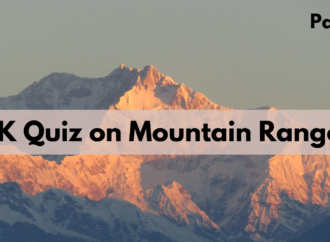Inland waterways of India – Inland waterways of India has about 14,500 km of navigable and potentially navigable waterways of which around 55% is used regularly. India’s Inland Waterways are un-utilized compared to other countries in the World. The total cargo moved (in tonne-kilometres) by the inland waterway was just 0.1% of the total inland traffic in India.
The Inland Waterways Authority of India (IWAI) came into existence on 27th October 1986 for development and regulation of inland waterways for shipping and navigation. Its headquarters is located in Noida, Uttar Pradesh. The IWAI declared five National Waterways in India and also proposed the sixth one.
List of Inland Waterways of India
There are Five Inland Waterways in India.
|
Inland Waterway |
Stretch |
Rivers |
Length |
| National Waterway – 1 | Allahabad – Haldia Stretch | Ganges-Bhagirathi-Hooghly River | 1620 Km |
| National Waterway – 2 | Sadiya Dhubri Stretch | Brahmaputra River | 891 Km |
| National Waterway – 3 | Kollam-Kottapuram Stretch | West Coast Canal and Champakara and Udyogmandal canals | 205 Km |
| National Waterway – 4 | Kakinada – Pondicherry Stretch | Godavari and Krishna | 1095 Km |
| National Waterway – 5 | Talcher – Dhamra Stretch | Matai and Mahanadi | 623 Km |
National Waterway 6 is the proposed waterway in Assam state and will connect Lakhimpur to Bhangra in river Barak. The 121 km long waterway will help in trading between the town of Silchar to Mizoram State.
- Least transport cost for heavy and bulky cargos.
- The risks of accidents and breakdowns, in this form of transport, are minimum as compared to any other form of transport.
- The capability of transporting a large number of cargos in one time from one destination to another.
- A fuel efficient and environmentally friendly mode of transportation.
- It provides much more flexible service than railways and can be adjusted to individual requirements.
- No need of huge investment for the infrastructure like other modes of transport and less annual cost for maintenance of river channels.
- The cheapest means of transporting raw materials and finished goods of various industries along the river banks.
- Attracts Tourists and also generated income for local people.
- Huge potential for the employment of a large number of people.
















